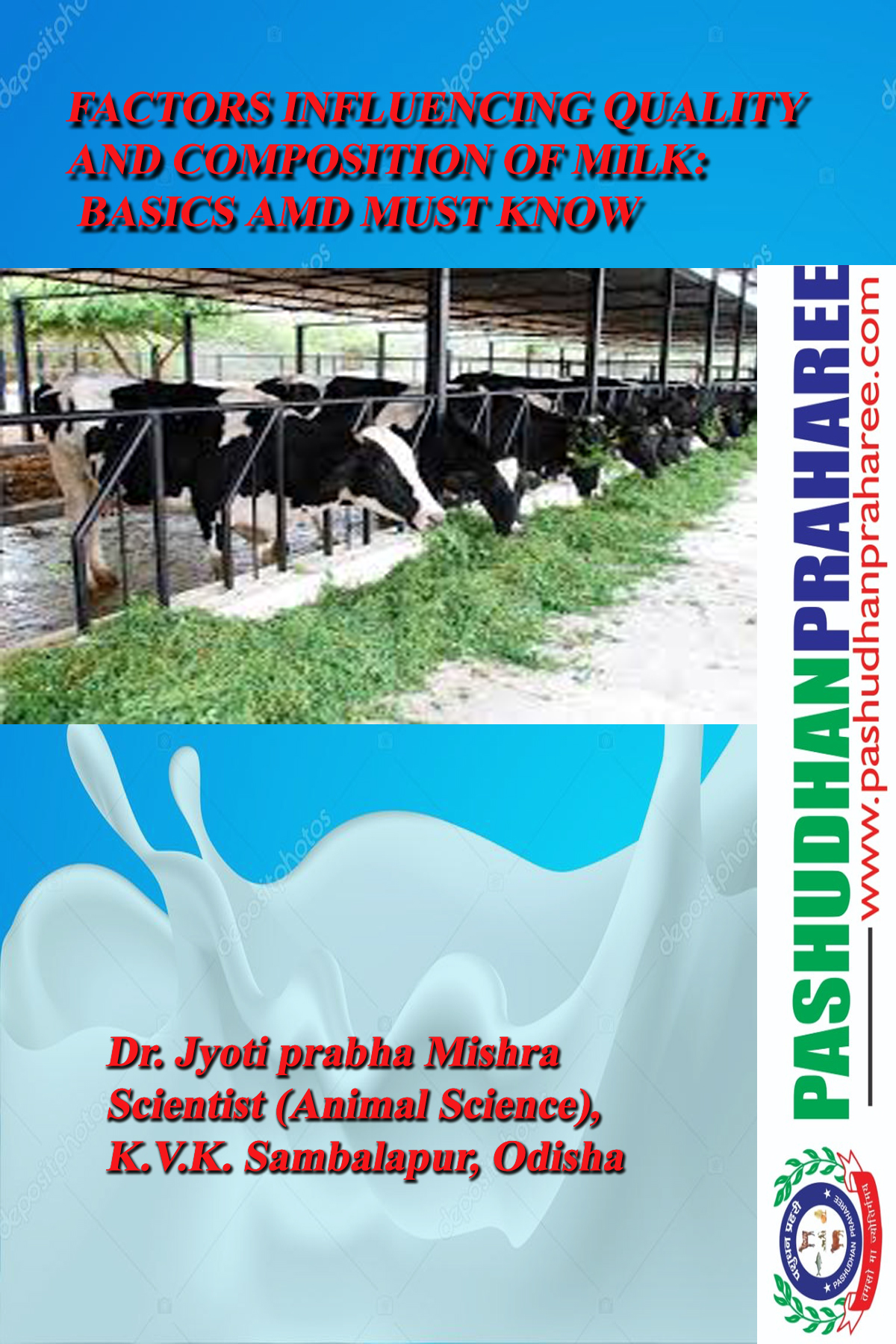FACTORS INFLUENCING QUALITY AND COMPOSITION OF MILK: BASICS AMD MUST KNOW
Milk is the primary source of nutrition for young mammals and it provides immunity, many other nutrients and the carbohydrate lactose (which is only found in milk) to the young one. It is a white liquid emulsion of fat globules and a suspension of casein micelles (casein, calcium and phosphorous) produced by the mammary glands of mammals. Several factors held responsible for the variation observed in the composition of milk and the major components of which are i.e. water, fat, protein, lactose and minerals.
Species
Milk composition differs according to the different species of animal concern. The fat content of the milk produced by cows can also be modified by adopting selective breeding method and genetic modification.
Genetic
Breed and individual cow
Milk composition varies according to breeds of dairy cattle. Jersey and Guernsey breeds provide milk of higher fat and protein content than Shorthorns and Friesians. Selective breeding can be used to improve milk quality. Heredity also stands as strong component behind the potential milk production of the animal. Besides this, environment and various physiological factors strongly influence the amount and composition of milk.
Environmental
Interval between successive milking
It has been reported that three times milking per day increases milk production up to 10 to 25 % whereas, milking four times a day results in another 5 to 15% increase in production. The fat content of milk varies between the morning and evening milking. If cows were milked at 12-hour intervals the variation in fat content between milking would be negligible, but this is not practicable on most of the farms.
Stage of lactation
The amount of fat, lactose and protein contents of milk varies according to the stage of lactation. Solids-not-fat content (SNF) is usually highest during the first 2 to 3 weeks and then it shows a decreasing trend. Fat content is high immediately after calving after which it begins to fall for next 10 to 12 weeks and further it tends to rise again until the end of the lactation.
Age
There is an inverse relationship observed between the age and milk composition with regards to fat content. With the increase in age of animal, fat content of their milk decreases by about 0.02 percentage units per lactation and the fall in SNF content is very high. After attaining 8 to 9 years of age, a reduction in the level of milk production observed in the cows generally.
Disease
Both fat and SNF contents can be reduced due to different diseases, particularly mastitis.
https://www.pashudhanpraharee.com/?p=13240&preview=true
Feeding regime
Heat stress resulted in decreased feed intakes, 10 to 25% lower milk production, decreased milk fat percentage, total protein, lactose and increase pH of milk. Under feeding tends to decrease both the fat and the SNF content of milk. Fat content and fat composition are showing more variation due to feeding of roughages (fibre). The SNF content can also decrease if the cow is fed a low-energy diet. The various types of diet, which can cause a decrease in milk fat percentage, are as follows:
- High concentrate rations
- Low roughage rations
- Grass from lush spring pastures
- Finely ground hay
- Heat treated feeds
- Feeds in pelleted form
Completeness of milking
The first milk obtained from the udder is comparatively low in fat while the last milk (or strippings) is always high in fat content. Thus it is essential to mix thoroughly all the milk removed, before taking a sample for analysis.
Solutions against these variations:
Provision of frequent feeding of low fiber, high grain diets increases milk fat levels. The greatest increase occurs in diets of less than 45 percent forage and when grain is fed separately as in parlor feeding. High producing cows should given 3.5 to 4.0 percent of their body weight as dry matter regularly.
- Feed containers should be kept clean and few amount of feed should be there for the animal most of the time in a day.
- Feeding frequency should be taken care.
- Moisture level of feed should be in between 25 and 50 percent (to optimize dry matter intake).On a dry matter (DM) basis, the minimum ratio of forage to concentrate required to maintain normal milk fat percentage is approximately 40 to 60.
- Animals should be taken care for their health and from mastitis.
Dr. Jyoti prabha Mishra
Scientist (Animal Science), K.V.K. Sambalapur, Odisha


